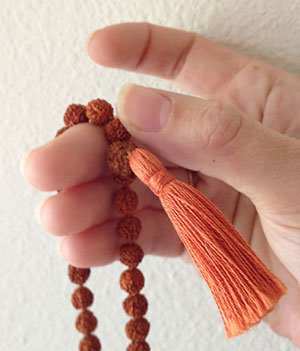Daily Puja and Mantra Japa are essential spiritual practices in Hindu tradition, fostering a deep connection with the Divine. Rooted in Vedic wisdom, these rituals help purify the mind, attract positive energies, and invoke divine blessings for peace, prosperity, and spiritual growth. Performing a simple yet sincere puja every day not only aligns an individual with sattvik (pure) vibrations but also enhances focus, devotion, and inner tranquility.
Whether it’s offering prayers to one's Ishta Devata (chosen deity) or reciting sacred mantras, daily worship creates a sacred space within the home, reinforcing discipline and faith. This article provides a comprehensive guide to performing daily puja at home, outlining its significance, step-by-step procedure, and the most powerful mantras for daily chanting.
Significance of Daily Puja
Puja means worship or reverence of the Divine. Most of the Vedic scriptures and epics, including the Vedas, Upanishad, Ramayana, Mahabharata and more, emphasise the significance of performing daily puja at home. There are various types of pujas ranging from simple ones to really elaborate and complex ones. Pujas such as Rudra Abhishek, Satyanarayan Puja, Diwali Puja, Vastu Puja and others are performed on specific days and events only a few times every year. Many devotees often perform a small daily Puja before leaving home for daily blessings of the Divine, Sattvik living and positivity. Devotees mostly offer Deity Pujas either to their favourite deity or Ishta Devta or to a specific deity for a specific purpose.
Daily Puja Procedure
As per the shastras or scriptures, early morning is the best time to perform daily Puja. The time after sunrise in the morning is considered as most Sattvik as Sato Guna (mode of goodness) is highly active during this time. As a result, the mind is calm and highly focused. There are many rituals and steps involved in conducting the daily Puja such as Mantra Japa, Shlokas Chanting and even fire rituals. These steps together create the required vibration and energies to ensure blessings and positivity. Pujas are offered to various Gods and Goddesses depending upon particular day which is dedicated to a particular Deity. It is mentioned in the scriptures that offering Puja to any Deity is equivalent to offering Puja to the Supreme Consciousness (Brahman).
Devotees may use the below-mentioned steps to perform the daily pujas:
Simple Steps for Daily Puja Vidhi
1. Take a bath and put on clean clothes, and sit peacefully in front of the deity idol or image
2. Concentrate and offer prayers while meditating upon the deity
3. Invite the deity to the altar and chant the mantra while offering flowers
4. Take a sip of water through the right palm and take a vow for the rituals
5. Bathe the symbolic form of the deity with water and auspicious items like milk, honey, curd, sandal or other items while chanting mantras
6. Dress or offer sacred clothes to the deity. Offer tilak and flowers and decorate the deity while chanting Deity’s name and mantra
7. Light an incense or dhoop stick and worship the deity with it, and spread its smoke throughout the altar
8. Wave a lamp in a clockwise pattern while the mantra is being chanted
9. Offer food to the deity, followed by betel leaves, betel nuts and money
10. After completion of basic puja, chant mantras, shlokas or stutis of the deity
11. You may also read the story or legend of the Deity
12. Circumambulate the altar, seek forgiveness for any mistake and bid farewell to Deity while the mantra is being chanted
13. Distribute and consume the food offered to Deity as Prasad.
Detailed Steps for Daily Puja Vidhi
- Deepa Puja - Worship of the lamp
- Ghanta Puja - Worship of the bell
- Shankha Puja - Worship of the conch
- Kalasha Puja - Invocation of the Holy Waters in the Kalasha
- Sankalpa - Resolving to perform the puja
- Vigneshwara Puja - Worship of Lord Ganesha
- Atma Puja - Meditating on oneself as Atma
- Peetha Puja - Worship of the seat of the deity
- Guru Dhyanam - Meditating on one's Guru
- Dhyanam - Meditating on the deity
- Avahanam - Invoking the deity
- Pranapratishtha - Infusing Prana in the Deity
- Asanam - Offering seat to the deity
- Padyam - Offering water to the deity for washing feet
- Arghyam - Offering water to the deity for washing hands
- Achamaniyam - Offering water to the deity for sipping
- Madhuparkam - Offering a mixture of honey, curd and ghee to the deity
- Snaniyam - Offering water to the deity for bathing
- Payah Snaanam - Bathing with milk
- Dadhi Snaanam - Bathing with curd
- Ghrta Snaanam - Bathing with ghee
- Madhu Snaanam - Bathing with honey
- Sharkara Snaanam - Bathing with sugarcane juice
- Panchamrita Snaanam - Bathing with Panchamrita (above five ingredients)
- Shuddhodaka Snaanam - Bathing in the holy waters of rivers
- Vastram - Offering Garments to the deity
- Upaveetam - Offering sacred thread to the deity
- Abharanam - Decorating the deity with ornaments
- Gandham - Offering fragrant substances to the deity
- Chandanam - Sandalwood paste
- Pushpam - Offering flowers to the deity
- Dhoopam - Lighting incense sticks before the deity
- Deepam - Lighting an oil lamp before the deity
- Naivedyam - Offering Food to the deity
- Tambulam - Offering betel leaves and Nuts to the deity
- Neerajanam - Waving camphor light before the deity
- Pushpanjali - Offering flowers to the deity
- Pradakshina - Circumambulating the deity
- Pranama - Offering salutations to the deity
- Stuti - Praising the deity with hymns
- Kshamaprarthana - Asking for forgiveness for any lapse in the puja
Most Popular Daily Mantras for Japa

Monday
- Lord Shiva || Om Namah Shivaya ||
Tuesday -
Lord Hanuman || Shree Hanumante Namah ||
Wednesday -
Lord Ganesha || Om Gan Ganapataye Namaha ||
Thursday -
Lord Vishnu || Om Namo Bhagavate Vaasudevaay ||
Friday -
Goddess Durga || Om Sri Durgaya Namah ||
Saturday -
Lord Shani || Om Shan Shanicharaya Namah ||
Sunday -
Lord Surya Dev || Om Shree Suryaya Namaha ||
How to Perform Daily Mantra Japa
Mantra Japa is the practice of repeating ma antra while focusing on the meaning of the mantra. Mantra Japa is best done using a strand of beaded mala known as Japa mala made of Rudraksha, red sandal, Tulsi or sphatik beads. Chanting of mantra helps anchor the fickle mind, improve focus and concentration and help attain peace of mind.
You can follow the below-mentioned steps to repeat the mantra using a Japa Mala.
- Sit on an Asana (rug) in a steady and comfortable pose in Sukhasana or Padmasana.
- You may resolve to repeat a certain amount of mantras
- Use a rosary or japa mala with tassel or Sumeru and begin the Japa on a bead next to Sumeru or tassel or Guru bead by gently rolling it between thumb and ring or middle finger until you reach Guru bead.
- Do not cross the Guru bead instead, reverse the bead string and start with the second round and repeat the procedure mentioned above
- Ensure the level of mala is not below the navel, and do not use the index finger for rolling the mala
- Rhythm the mantra with the breath and think of the meaning of the mantra
- Repeat the mantra slowly with a feeling that the mantra is purifying your thoughts and heart
- After completion of mantra Japa, sit in silence for some time to imbibe the spiritual vibrations of the mantra Japa


-in-Astrology.jpg)




-Mochan-In-Sanatan-Dharma-B.jpg)

Onlinetemple
|August 22, 2024
Absolutely loved this post on daily puja at home! Your insights on creating a serene and meaningful worship space are truly inspiring. It’s wonderful to see how daily rituals can deepen our spiritual connection and bring peace to our lives. Thank you for sharing such practical and uplifting guidance!
NITHI ANANTHAM M
|December 14, 2023
A good brief explanation.
Om Choudhary
|December 10, 2023
I'm Om and I'm 17 years old. I just want u to know that this information is very helpful and well-defined. I was finding the way to do pooja daily and this helps a lot. Thanks ❤ Radhe radhe